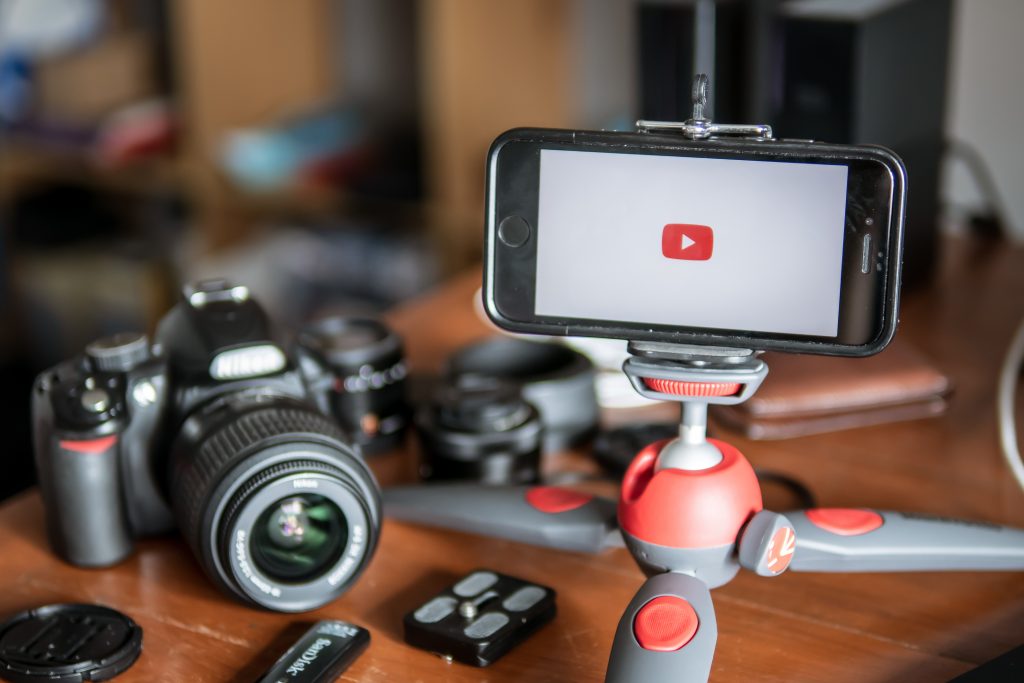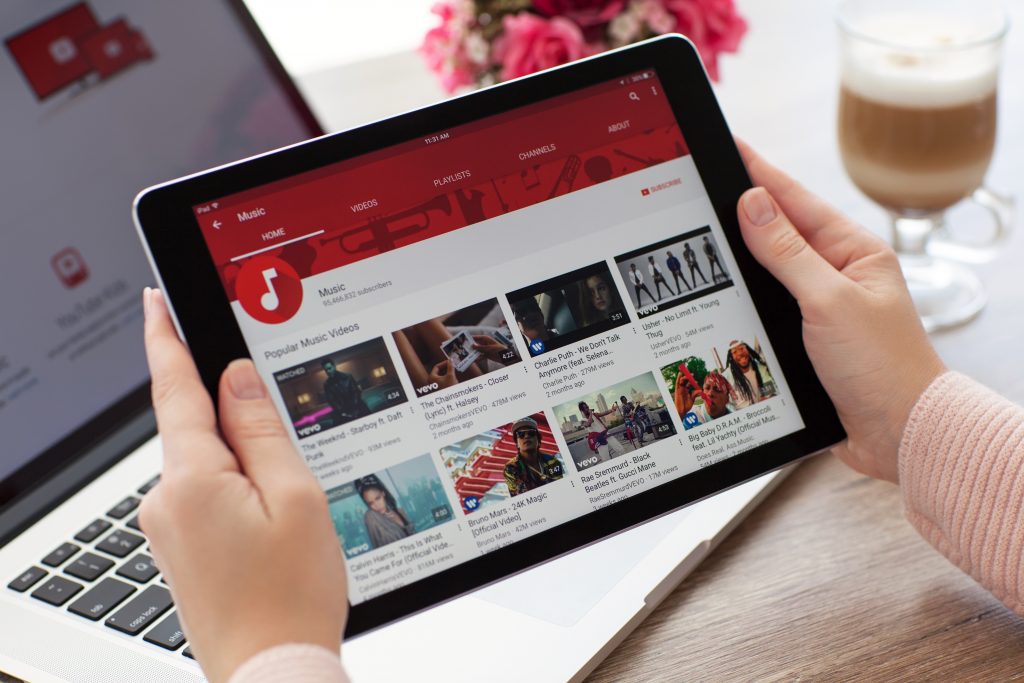We tend to think of YouTube as a video site, but what it really is a search engine for videos and it also happens to be the second largest search in existence, after Google. Its size makes it both a place where you have to place your video marketing ads and also a difficult ecosystem to establish yourself in. If you want your marketing video to wrack up the views and be seen by all the right people, you need to put some thought into your YouTube video marketing. But what does that actually mean? In a sentence: it means packaging your video in the proper text-based information to make it easily searchable and clickable by your target audience.
It includes thumbnails, titles, and descriptions, playlists, channel strength, tags, closed captions, view-through rate, and audience interaction (comments & subscriptions). Seems like a lot, but don’t worry, we’ll break each one down for you so that you can make YouTube an integral part of your video marketing strategy.
Start With Your Keywords

Before you do anything, you want to get your advertising agency or in-house SEO expert to create a list of relevant keywords. These terms are going to be the backbone of your YouTube SEO strategy so choose them wisely. As with all SEO research, start by asking yourself what words people use when they want to see a video like yours? While you should definitely use Google for your baseline research, you can also find a lot of relevant keywords on YouTube itself. Type the first part of one of your keywords into the search bar and check out the auto-fills. Another great YouTube SEO trick is to open a video in your niche with a lot of views and find the keywords in their title and description. For a more in-depth look at SEO for YouTube, check out our full article.
Put Your Keywords to Work
The Title
The first place to insert your keywords is in the title of your video. This title is not only one of your main drivers of search traffic, it’s one of your main drivers of clicks as a good title will grab people’s attention and get them interested in the content. YouTube SEO best practice dictates that titles are short and front-loaded with your relevant keyword. Depending on where your video appears on YouTube, you’ll have between 50 and 60 characters before layout restrictions cut off the end so resist the urge to get overly clever or withhold information until the end. For a more in-depth discussion about keywords, read our blog here.
The Description
YouTube and Google use the words in your description along with your title to help index your video in their all-important search results. The text should include your main keyword in the first few lines along with long-tail keywords so that Google and YouTube know what your video is about and can serve it up to the people searching for your specific search terms. Don’t spam. Don’t copy and paste large blocks of text that don’t succinctly describe the video and your company, and don’t pack in keywords unnecessarily. However, you have a whopping 5,000 character limit on your descriptions, so do make use of it. Too many people on YouTube completely neglect the SEO power of their descriptions and throw in one or two sentences. Write more; it will make your video rank higher. Like a good newspaper article, the most important stuff should be in the beginning of the description and the less important details should be at the end. You should also throw in a link to your website or any other platform that’s relevant to the call to action.

Transcription
We won’t lie: transcriptions are tedious to do, difficult to get right, easy to get wrong, and rarely missed by your viewers. However, you’ll notice that many of the most successful channels on YouTube have their videos transcribed. This is because tacking a massive word file stuffed full of keywords onto your video gives it a valuable SEO boost. It’s also handy for the way it shows up in YouTube’s preview snippets. If you do transcribe your video remember that you’ll want to have keywords in the actual video script so the written transcript will also contain those keywords. If you don’t have the time or money to transcribe your video or pay someone else to do it, you can use YouTube’s free transcription service, but it doesn’t work as well as a human.
Channel
The last snippet of text that is really important to your YouTube SEO is your channel description. In general, you should make sure your channel page is in good working order, this means having a good cover photo, organizing all your videos into playlists, following other channels, and selecting a good featured video. Pay special attention to your description. As with your other texts, include the main keywords connected to your company as well as a thorough explanation of who your company is and what it does. As with everything else you write, don’t keyword pack and don’t spam; it will actually work against you. The more accurate you are about who you are and what you offer, the better your channel, and by extension, your videos, will rank.
Tags
Tags are generally considered less important than title and description in the world of YouTube SEO, but they can still give your video a little boost. Always make your main keyword and long-tail keywords tags, and then include general areas of interest, like your industry or niche market.
Make Your Pictures Pop

Thumbnails
Your thumbnail doesn’t actually affect how much your video shows up in searches, but it’s extremely important when it comes time for viewers to actually click on your link. The best thumbnails are not random screenshots from your video, they are either screenshots taken at the most inspiring part of your video which you have specifically chosen, or images taken separately and uploaded during the video creation process. Either will work, but it’s worth looking at the other videos that you will be competing with and make sure your thumbnail stands out in comparison. The aspect ratio of YouTube thumbnails is 16:9 with the optimal dimensions of1280 X 720 pixels. For more on thumbnails, click here.
Use playlists for better SEO
Along with descriptions, playlists are one of YouTube’s most underutilized video optimization tools but they are a fundamental element in any YouTube video marketing strategy, especially if you have a decent-sized library of videos. Playlists allow you to organize your videos into lists that auto-play each clip one after another. Typically grouped thematically, they not only streamline the viewer experience, they also send another SEO signal to YouTube and Google that your video is about all the things you say it’s about in your title and description. To read more about playlists, have a read of this.
Get your audience involved
The final SEO factor that you need to consider for your YouTube video marketing is also one of the most difficult to control: audience participation. Broadly speaking, it can be broken down into two categories. The first is the time that your target audience spends watching your video. Higher view through rates indicate to YouTube’s algorithm that your video must be good so up the search rankings it goes. The best way to ensure these rates is by making great videos.

The second broad category of audience participation encompasses what they do on the page during and after their session. This includes link clicks, likes, comments, shares, and embeds. As on most social media platforms, likes, comments and shares are the fairy dust of YouTube video marketing. Watch any top vlogger and you’ll hear them asking for these at least once a video. You might not agree with their tactics, but they didn’t get all those views without a deep understanding of how the system works. Almost all audience participation with your videos, aside from the dreaded “thumbs down” is going to help promote your YouTube video so make sure you encourage it. One of the easiest ways to do this, outside of making a video that people want to comment on, is always replying to the comments you get and asking questions in them. This sort of active commenting should be part of the weekly tasks of your social media manager. Read more about cultivating YouTube communities here.
Create different types of video to cater to your audience interests
There’s no secret to building a channel that mints views on YouTube, but there is a well-established strategy that YouTube itself expounds to its video makers. They call it Hero, Hub, and Hygiene. Each of these represent a style of video that, working in conjunction with each other, serves all of your target audience’s interests. Hero content refers to your big brand pieces: tv commercials or company promo videos that you spend a lot of money on and want everyone to see. Hub videos are often episodic and designed to appeal to the section of your audience that is already interacting with your brand, either as return buyers, or people actively contemplating their first purchase. Hygiene videos are ever-green material that answer the questions that your target audience is asking and also demonstrate how your company or product can be of further use to them. These, more so than that Hero and Hub videos, address specific keywords because they represent the point of entry for many people in your target audience to your marketing content.
What next?




